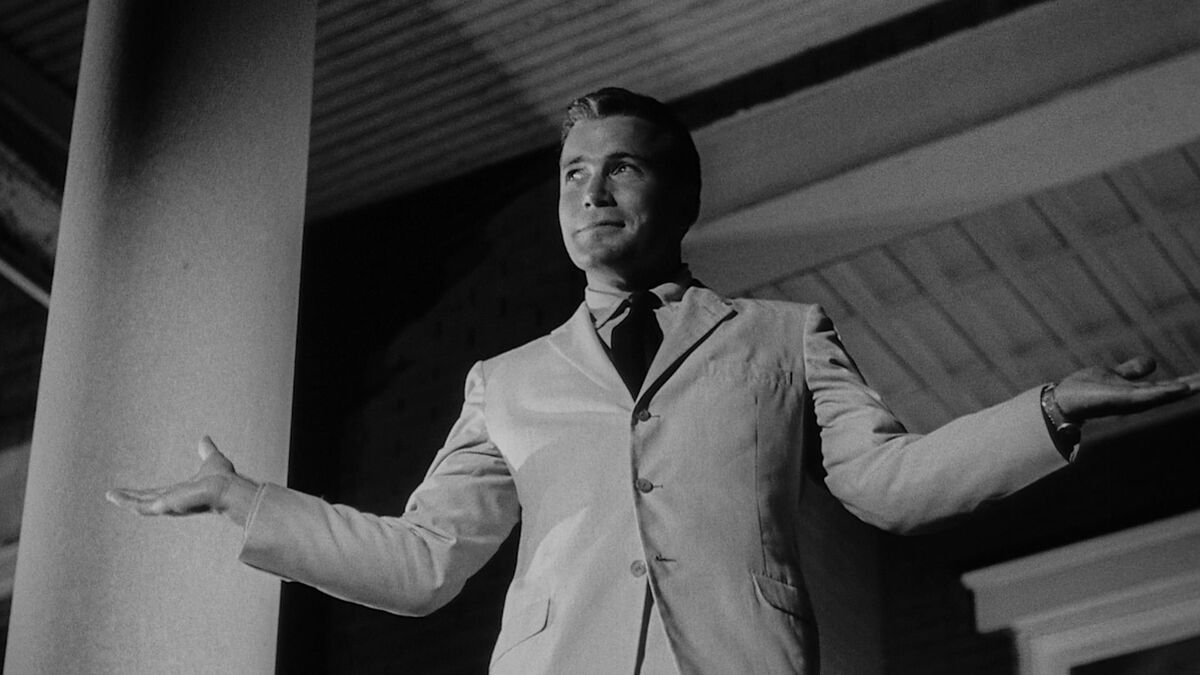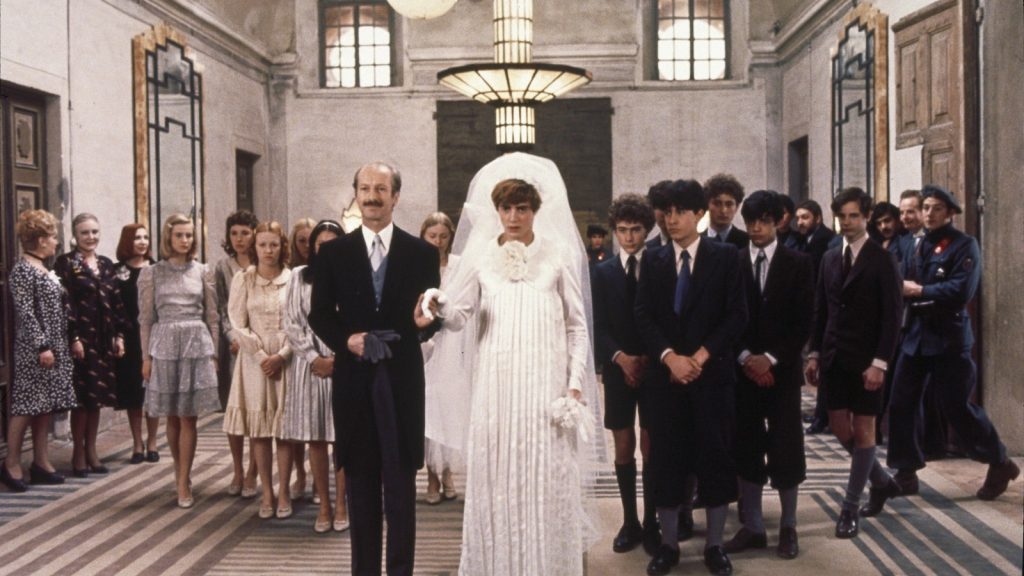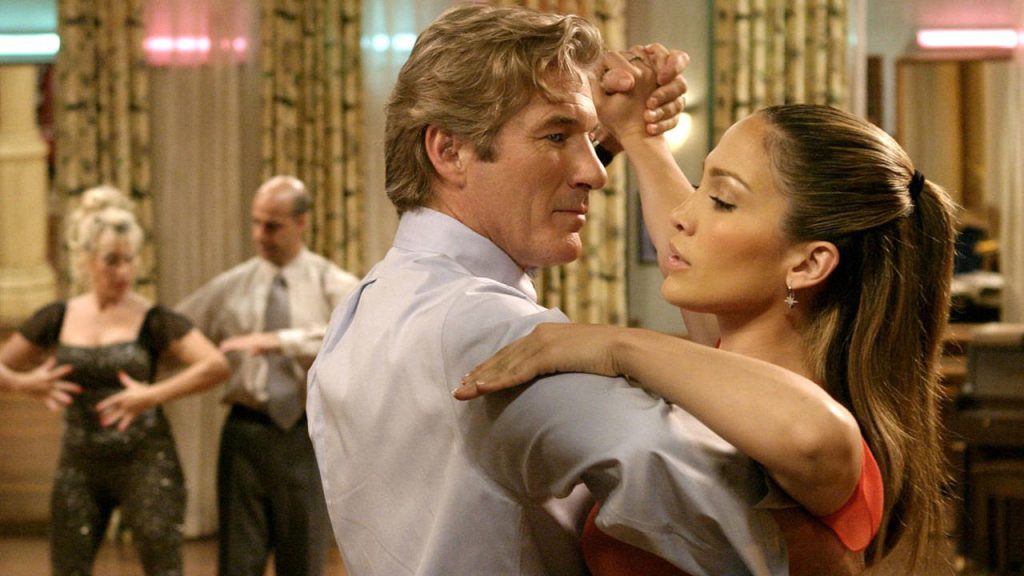A charismatic, well-dressed white man delivers a lengthy monologue about the impending destruction of the true America, appealing to the patriotism of his white male audience, warning them against a progressive organization that is “nothing but a communist front headed by a Jew who hates America.” Is this a modern right-wing cable news show? No, it’s Roger Corman’s incendiary 1962 drama The Intruder, which premiered 60 years ago this week to mostly unreceptive audiences in New York City. The Intruder remains an outlier for Corman, known for his low-budget genre films that filled drive-ins for decades, with the mercenary approach of co-opting various trends into easily digestible B-movies.
The Intruder takes on the timely issue of school integration and civil rights, but it never comes off as opportunistic or crass. Corman is a born showman, so The Intruder is gripping and suspenseful, full of tense confrontations and inflammatory speeches, and Corman can’t resist a little sexual titillation, too. But it all serves the serious, urgent message, which Corman delivers with fiery passion, never shying away from making his audience uncomfortable. He shoots stark black-and-white images, with frequent skewed camera angles to add to that discomfort. Corman is aided by a smart, powerful screenplay by Charles Beaumont, adapting his own novel, and by a mesmerizing lead performance from William Shatner in one of his earliest—and still best—roles.
Shatner plays Adam Cramer, the aforementioned charismatic, well-dressed white man, who rolls into the small Southern town of Caxton on a bus, clearly a man on a mission. Corman punctuates Adam’s arrival in Caxton with the kind of ominous music usually reserved for serial killers or Satanists, so when Adam helps a little girl and her mother off the bus, already ingratiating himself to the locals, it’s obvious he has something sinister in mind. Caxton has just been ordered to integrate its schools, and starting on the Monday after Adam arrives, 10 Black students will be attending the previously all-white local high school. None of the white residents appear to support the decision, but everyone Adam asks about it expresses a weary resignation to following the law.
Adam questions that reaction, using his knowledge of “the truth” to spur Caxton’s white residents to action. He may be the catalyst, but it doesn’t take much of a push before the townspeople are burning crosses, bombing the local Black church, and swarming a Black family’s car as they drive through town. Adam, who sometimes says he’s from Los Angeles and sometimes says he’s from Washington, D.C., is just as much of an elitist outsider as the vague boogeymen he blames for Caxton’s problems, but he speaks the locals’ language. He knows just what to say to get the reaction he wants, then he knows exactly when to step back so he isn’t directly involved in any illegal actions. He calls what he does “social work” or “social reform,” but it’s the exact opposite of those progressive-sounding terms.

Adam’s nebulous background is just one way that Corman and Beaumont depict him as an almost supernatural figure, arriving from nowhere on his way to nowhere else. But The Intruder doesn’t try to shift blame for its characters’ racist attitudes, and Adam is certainly not the source of their ugliness. Characters casually drop the N-word right from the start of the movie, and they lament the “big Black flood” that’s coming with integration. Even the movie’s most noble white character, local newspaper editor Tom McDaniel (Frank Maxwell), starts out as an opponent of integration, only coming around to the opposite perspective when he sees the kind of violence that Adam has incited.
Tom is the closest that The Intruder comes to a white-savior character, but while he eventually puts his life on the line to stand up for what he believes in, it’s clear that the danger he chooses to face is nothing compared to what Caxton’s Black residents deal with every day. One old Black man even expresses his own opposition to integration, because he fears the violence it will bring to his community. Corman and Beaumont stumble a bit with the Black characters, who are never as prominent as the white characters, and mostly exist to suffer quietly. This is a movie aimed at showing white audiences the rot in their own midst, though, and it achieves that effect masterfully.
Shatner deserves much of the credit as well, bringing greater subtlety to his performance than he’s generally known for, and making it count when he eventually unleashes a signature Shatner freakout. That comes late in the movie, as Adam is losing his grip on the town, in a way that ultimately lets the Caxton residents off the hook a bit. It’s hard to blame Corman for believing in the possibility of social progress, though, even in small increments. He couldn’t have envisioned that Adam Cramer would be the template for similar demagogues 60 years later, with barely a word changed in their rhetoric. “This is just the beginning!” Adam wails futilely at the end of the movie. Sadly, he turned out to be right.



